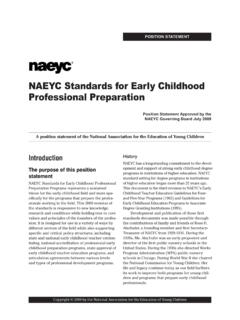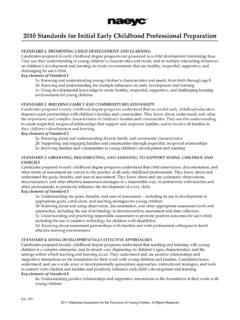Transcription of Bacterial genomic DNA isolation using CTAB
1 Last Updated 10/23/12 2800 Mitchell Drive, Walnut Creek, CA 94598 Bacterial DNA isolation CTAB Protocol Bacterial genomic DNA isolation using CTAB Version Number: 3 Start Production Date: 8-25-04 Stop Production Date: (current) Authors: William S. and Helene Feil, A. Copeland Reviewed by: M. Haynes 11-12-12 Summary This scaled up CTAB method can be used to extract large quantities of large molecular weight DNA from bacteria and other microbes. Materials & Reagents Materials/Reagents/Equipment Vendor Stock number Disposables microcentrifuge tube Eppendorf 22 36 320-4 50-mL Nalgene Oak Ridge polypropylene centrifuge tube VWR 21010-568 10-mL pipette Falcon 357551 1-mL pipette tips MBP 3781 Reagents CTAB (*see preparation notes at end) Sigma H-6269 NaCl Sigma S-3014 TE buffer (10mM Tris; 1 mM EDTA, pH ).
2 Ambion 9858 Lysozyme Sigma L-6876 Proteinase K Qiagen 19131 5M NaCl Ambion 9759 10% SDS Sigma L-4522 Chloroform Sigma C-2432 Isoamyl alcohol Sigma I-9392 Phenol Sigma P-4557 Isopropanol VWR PX-1835-14 Ethanol AAPER --------- DNase-free RNAse I (100 mg/mL) Epicentre N6901K Molecular biology grade DNase-free water Equipment Hot Plate 250 mL glass beaker Magnetic stir rod Thermometer Last Updated 11/12/2012 2800 Mitchell Drive, Walnut Creek, CA 94598 Automatic pipette dispenser Sorval 500 Plus centrifuge (DuPont, Newtown, CT) 65 C water bath 37 C incubator/heat block 56 C heat block Procedure Cell preparation and extraction techniques.
3 (Modification of CTAB method , in Current Protocols in Molecular Biology) Cell growth: To minimize gDNA sampling bias ( , excess coverage of sequences around the origin of replication) please take precautions NOT to proceed with DNA isolation while most of the cell population is in the stage of active DNA replication. We recommend collaborators to check the cell growth prior to DNA isolation . DNA should be prepared from cell culture that is either in late log phase or early stationary phase. If the cells are in the early log phase, the culture should be placed on ice or 4 C to slow down the growth and allow DNA replication to complete prior to cell lysis and DNA isolation .
4 If at all possible, please produce more DNA from a single isolation event than is strictly required for library creation and freeze aliquots of the extra DNA. Then, should more DNA be required for finishing it will be available. If extra cells are available instead, please consider storing extra aliquots in 15-40% glycerol at -80 C. 30ml 60ml 1. Grow cells (see above) in broth and pellet at 10,000 rpm for 5 min or scrape from plate. 2. Transfer Bacterial suspension to the appropriate centrifuge tube. 3. Spin down cells in microfuge or centrifuge at 10,000 rpm for 5 minute.
5 4. Discard the supernatant. 5. Resuspend cells in TE. 6. Adjust to OD600 with TE buffer (10mM Tris; 1 mM EDTA, pH ) 7. Transfer given amount of cell suspension to a clean centrifuge tube. ------- 740 l 8. Add lysozyme (conc. 100mg/ml). Mix well. ------------------------------------- 20 l 400 l 800 l This step is necessary for hard to lyse gram (+) and some gram ( ) bacteria. 9. Incubate for 30 min. at 37 C. 10. Add 10% SDS. Mix well. ---------------------------------------- ----------------- 40 l 800 l 11. Add Proteinase K (10mg/ml).
6 Mix well. ---------------------------------------- 8 l 160 l 320 l 12. Incubate for 1-3 hr at 56 C. If cells are not lysed (as seen by cleared solution with increased viscosity) incubation can proceed overnight (16 hrs). 13. Add 5 M NaCl. Mix well. ---------------------------------------- ------------------- 100 l 2ml 4ml Last Updated 11/12/2012 2800 Mitchell Drive, Walnut Creek, CA 94598 14. Add CTAB/NaCl (heated to 65 C). Mix well. -------------------------------- 100 l 2ml 4ml 15. Incubate at 65 C for 10 min. 16. Add chloroform:isoamyl alcohol (24:1).
7 Mix well. ---------------------------- 10ml 20ml 17. Spin at max speed for 10 min at room temperature. 18. Transfer aqueous phase to clean microcentrifuge tube (should not be viscous). 19. Add phenol:chloroform:isoamyl alcohol (25:24:1). Mix well. --------------- 10ml 20ml 20. Spin at max speed for 10 min at room temperature. 21. Transfer aqueous phase to clean microcentrifuge tube. 22. Add chloroform:isoamyl alcohol (24:1). Mix well. ---------------------------- 10ml 20ml 23. Spin at max speed for 10 min at room temperature. 24. Transfer aqueous phase and add vol isopropanol (-20 C).
8 ( if 400 l of aqueous phase is transferred, add 240 l of isopropanol. ---- Add vol. ---- 25. Incubate at -20 C for 2 hrs to overnight. 26. Spin at max speed for 15 min at 4 C. 27. Wash pellet with cold 70% ethanol (directly from -20 C freezer), spin at max speed for 5 min. 28. Discard the supernatant and let pellet dry at room temp. This may take some time (20 min. to several hours, depending on humidity). 29. Resuspend in ~170 l of DNase-free water. Proceed to RNAse treatment. Set up the following reaction in a microcentrifuge tube (multiple reactions can be done in different tubes): Note: RNase I @ 10U/ l, one unit digests 100 ng of RNA per second DNA (in H20) 170 l 10X RNase I buffer 20 l RNase I 10 l 200ul Mix & Spin down.)
9 Incubate tube at 37 C for 1 hr. Checkpoint: Check a small aliquot (5ul) on an agarose gel with a no treatment control. Run gel 10-15 min. If there is only a trace of RNA, proceed with next step, heat inactivation. If a large amount of RNA is still present, add another 10 l of RNase I and repeat the incubation. Heat inactivate enzyme at 70 C for 15 min. Place tube on ice to cool. 2. Ethanol Precipitation Add 1/10 volume of 3M Sodium Acetate to your sample. Add volumes of 100% ethanol. Last Updated 11/12/2012 2800 Mitchell Drive, Walnut Creek, CA 94598 Mix and spin down sample.
10 Place at -80 C for 30 min (-20 C 2 hrs to overnight). Spin sample at 4 C for 20 min to pellet DNA. Carefully, pour off supernatant. Wash pellet with 70% ethanol (cold). Spin sample at 4 C for 3-5 min. Pull off all ethanol with pipet tip. Air dry pellet (or vacuum dry for 5-15 min using no heat). Resuspend pellet with 100 l of TE. If multiple reactions, combine them. Run 1 l in a 1% agarose gel to check quality. Store DNA @ -80 C or -20 C. Measure DNA concentration with fluorometer dsDNA assay (Qubit or equivalent) or UV absorption (Nanodrop).








